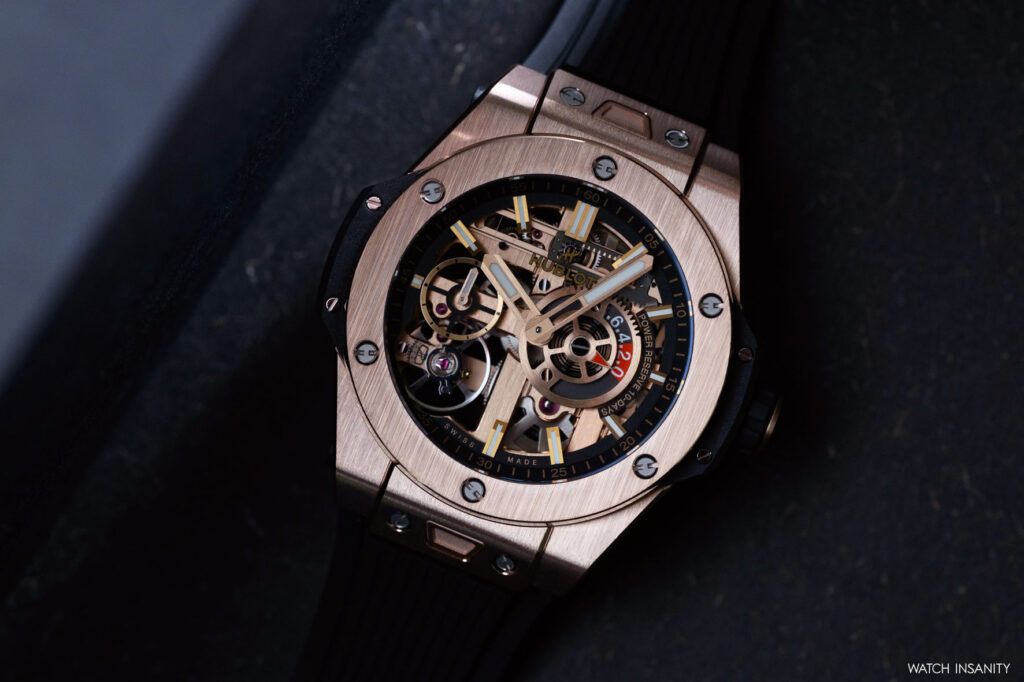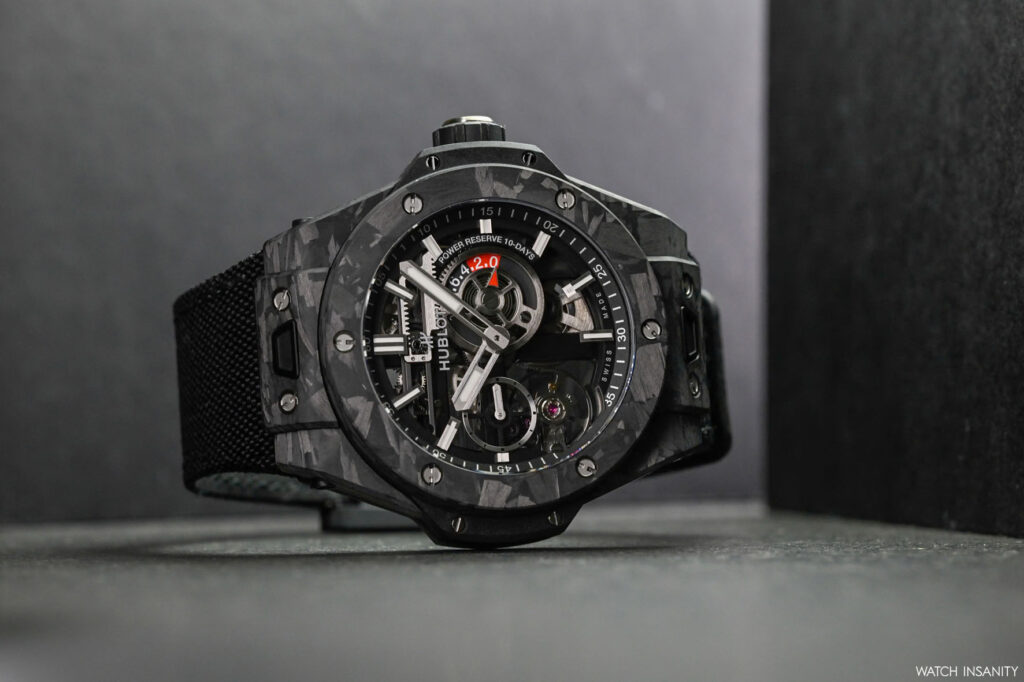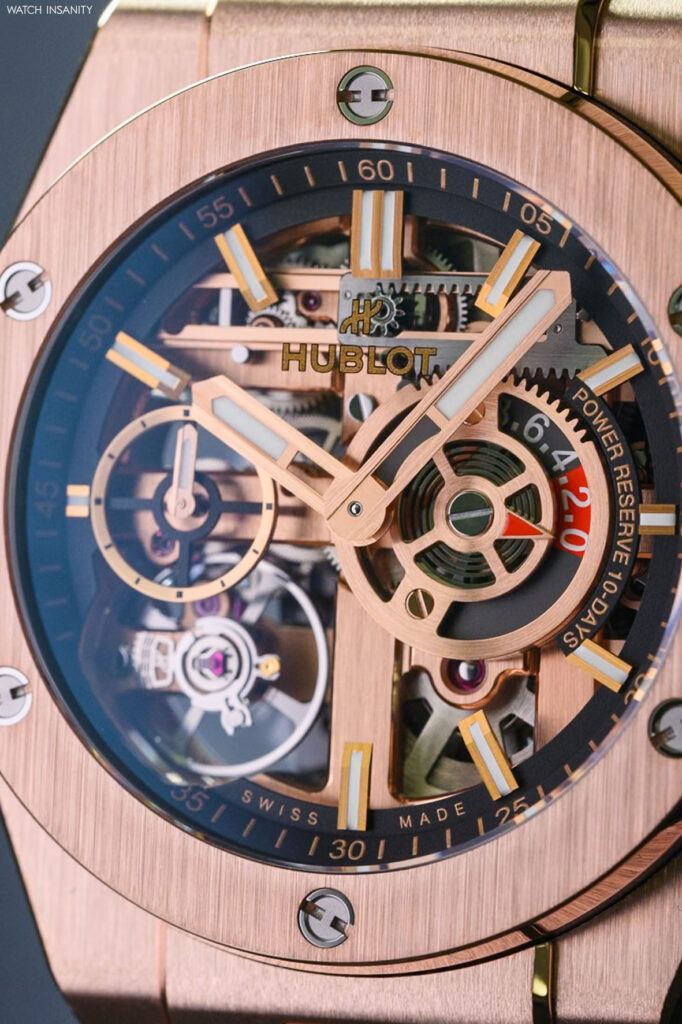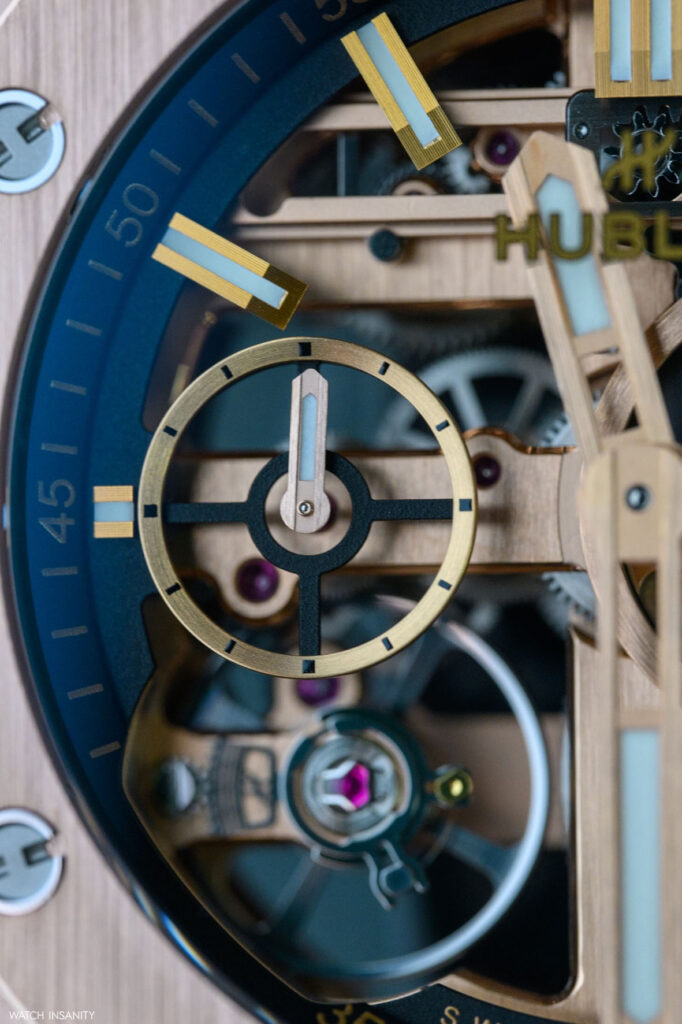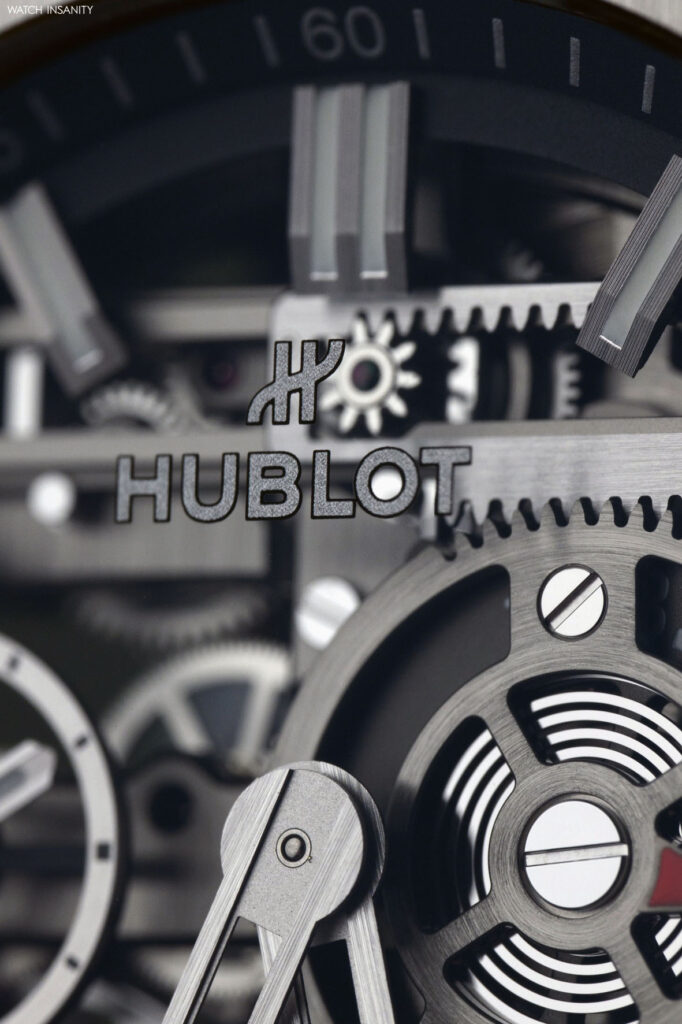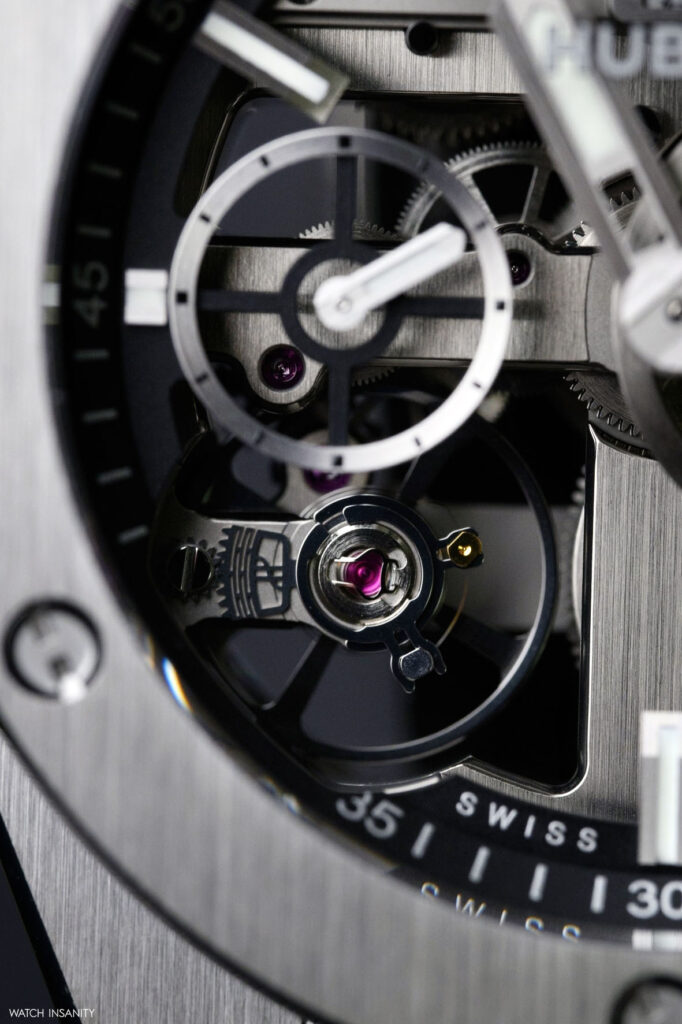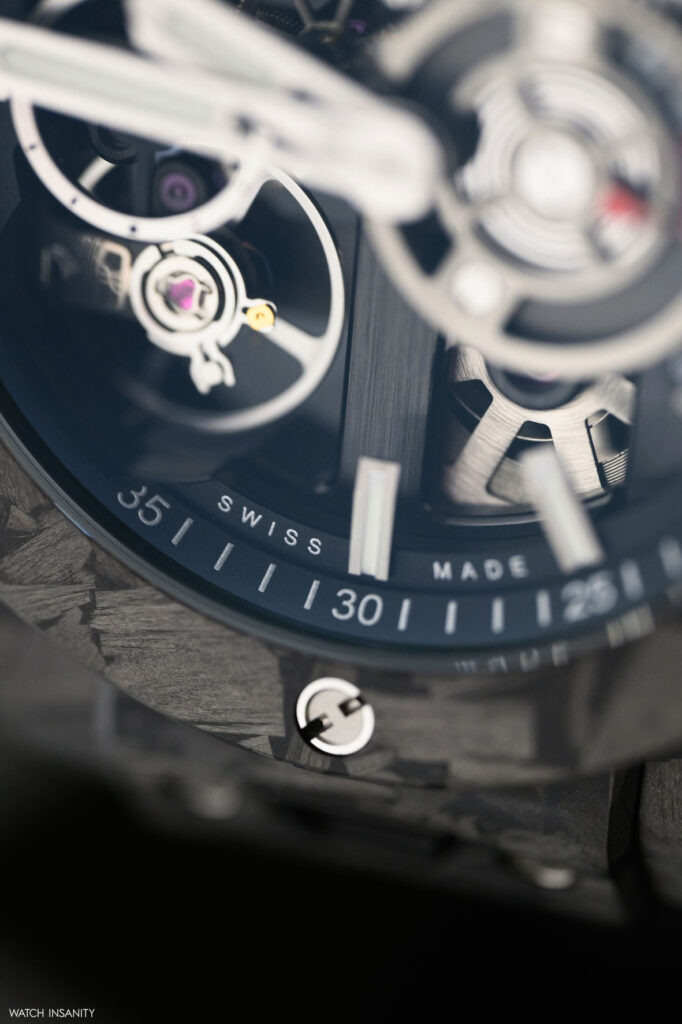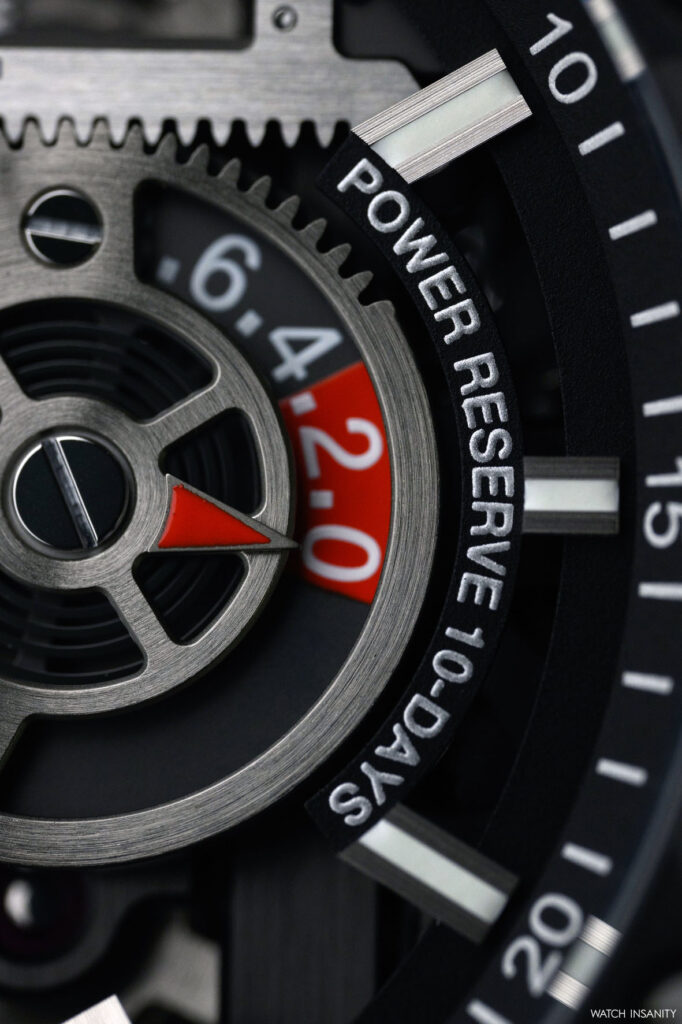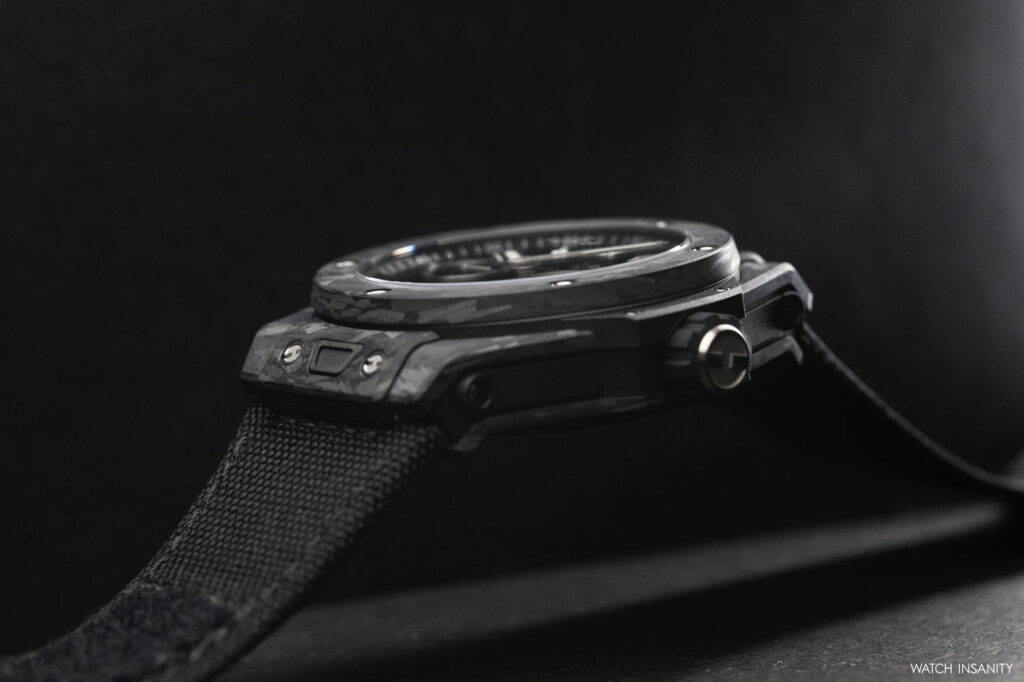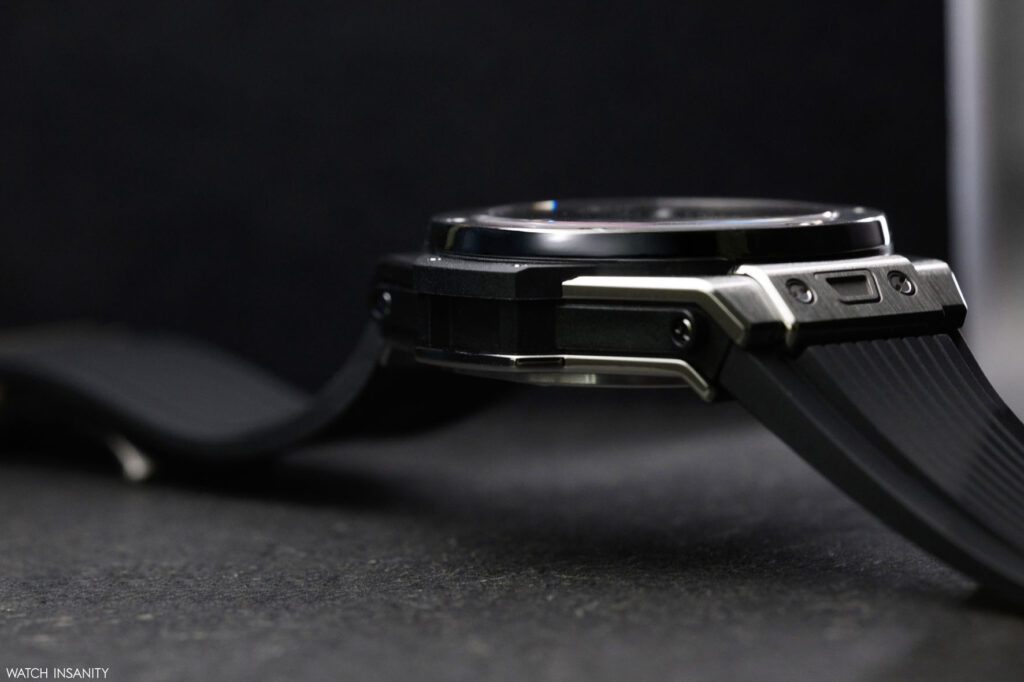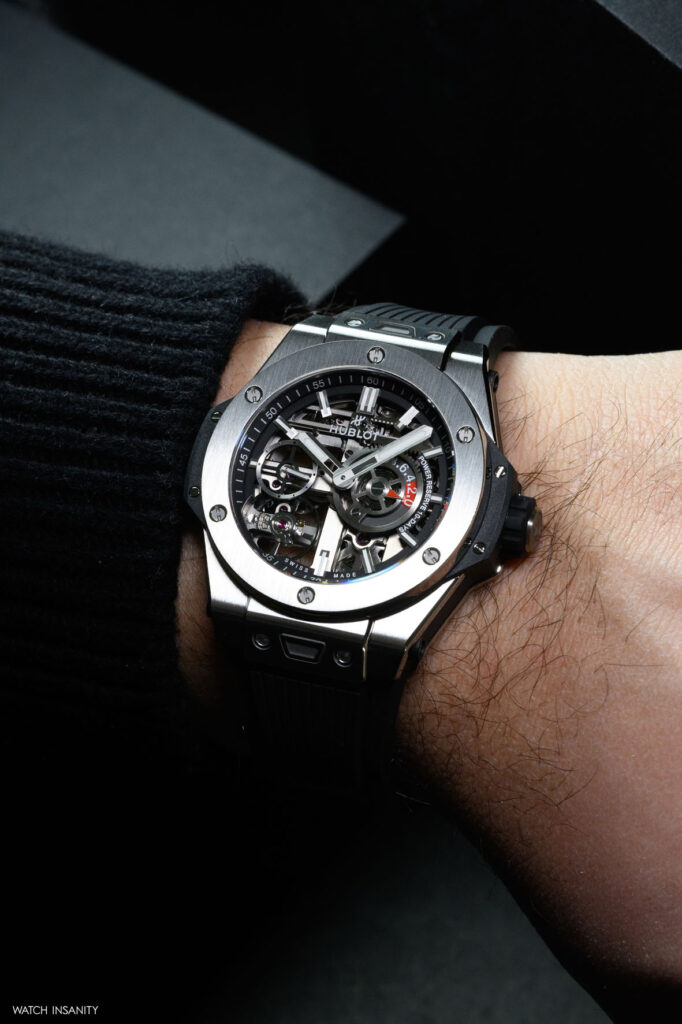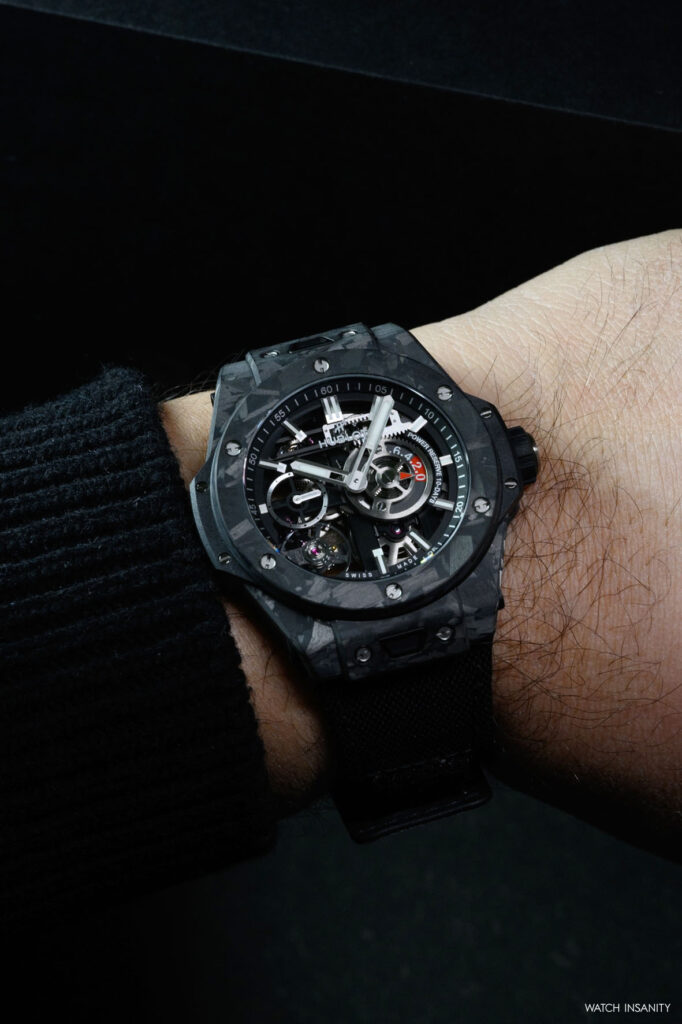Hublot Big Bang MECA-10: back to the future
31 January 2025Among the many objectives Hublot has set for itself since its creation, one in particular has been preserved without compromise: to amaze. The brand has pursued this by using avant-garde materials, bold aesthetics, and movements ensuring unique performance. It was precisely by working on this last aspect that, in 2016, Hublot presented the Big Bang MECA-10, its first timepiece with a 10-day power reserve. Today, a little less than ten years after that innovation, the brand is back with a new version of that revolutionary watch, whose most obvious difference from its predecessor lies in the diameter of the case, which is downsized from 45 to 42 mm.

We already wrote about the Big Bang MECA-10 at the time of its introduction, and this article is an excellent starting point to recall the watch’s main features. The philosophy that led to its creation has remained substantially unchanged: to make the mechanical movement as visible and alive as possible, effectively eliminating the dial as we are used to conceiving it. Even the name, MECA, recalls the idea behind the aesthetics of the timepiece, that of the Meccano game; here, the parts that make up the system are clearly visible and contribute to the beauty of the architecture, aestheticising something that is normally hidden from view.
It was not an easy job in 2016, nor is it an easy job now. It’s true that the mechanical challenge was already met nine years ago, but with this new reference Hublot’s watchmakers faced another problem: the need to preserve everything that made the MECA-10 so original, while reducing its dimensions to fit the 42 mm Big Bang case. All without compromising its chronometric performance and reliability.
ENGINEERING OF THE BIG BANG MECA-10
In the new version of the Big Bang MECA-10, Hublot has managed to retain the distinctive assembly of the skeleton hand-wound movement while modifying its structure compared to the 2016 reference. This translates visually into a different aesthetic – but one that doesn’t betray the basic mission of making everything open and visible. Comparing the new and old references, for example, one notices that the power reserve disc has changed from 6 o’clock to 3 o’clock, and the indication of the remaining autonomy is no longer through a window but via a hand.

The small seconds counter, positioned at 9 o’clock just above the balance wheel, remains fully visible. This highlights the exclusive fine adjustment mechanism patented by Hublot, which acts on the regulating organ equipped with a silicon escapement wheel that is therefore paramagnetic and requires no lubrication. A guarantee of reliability and precision.


The new IWC-manufactured HUB1205 calibre with double barrel replaces the previous HUB1201 due to its updated architecture which, however, retains the feature that made the first MECA-10 revolutionary – namely the system that makes it possible to display the power reserve. Here, too, the display is driven by a rack-and-pinion system rarely seen in mechanical watches. It consists of a linear gear that meshes with a circular gear, moving in a straight line on the 9-3 axis. A close look at this system reveals a mechanism that is more complex than it appears, consisting of two superimposed discs rotating in opposite directions, connected by a spiral spring that coils in the centre like a barrel spring.


This is an ingenious winding system that ensures synchronisation between the power reserve display and the optimal winding level of the barrel springs. Without going as far as the MP-11’s 14 astonishing days, the actual power reserve of the MECA-10 exceeds ten days, but Hublot has chosen to limit it to 240 hours because this is the optimal chronometric performance interval within which to guarantee maximum precision.
HUBLOT AND MATERIALS SCIENCE
Aesthetically, the hand-wound HUB1205 calibre has three linear bridges attached to the mainplate. The bridges are decorated with satin-finished surfaces and hand-polished bevels, a sign that even when faced with an avant-garde and unusual movement, Hublot’s craftsmen have not deviated from their haute horlogerie vocation. They have also done so by finishing the calibre with a galvanic treatment, which gives it a different colour depending on the material of the case to which it is matched. For each of the three different versions of the case – King Gold, titanium and Frosted Carbon –, the movement is coloured in 5N gold, metallic grey or black.


Compared to its predecessor, as written above, the case has more ergonomic proportions – 42 by 13.9 mm – but retains the familiar silhouette of the Big Bang collection. The King Gold and titanium versions have the classic finish reserved for the collection’s watches with satin-finished surfaces and polished edges, while theFrosted Carbon is the first example of this type of Big Bang to join the main collection. As anyone familiar with the use of materials in watchmaking knows, Frosted Carbon does not have a regular finish, just as the case with layered sheets of carbon fibre. This means each watch can be considered as a unique piece.

Coming to straps, the King Gold and Titanium references have the classic black structured rubber one, with a folding clasp made of the same material as the case. The watch in Frosted Carbon, on the other hand, extends its vocation for lightness to the strap, which is made of a Velcro fabric with a ceramic folding clasp. Prices range from 44,500 euros for the King Gold to 23,900 euros for the Titanium, and 28,500 for the Frosted Carbon reference.

Yet again with this new version, the MECA-10 confirms Hublot’s vision of reinventing creativity in watchmaking through a modern interpretation of the mechanical movement. Devoid of a conventional dial, the MECA-10 is in all respects an intriguing creation that changes the way we perceive watches mechanics and the flow of time itself. Like a construction built layer by layer, this timepiece offers something to discover at every angle. Whether it is the art of mechanics or the art of fusion, Hublot nailed it again.
By Davide Passoni

